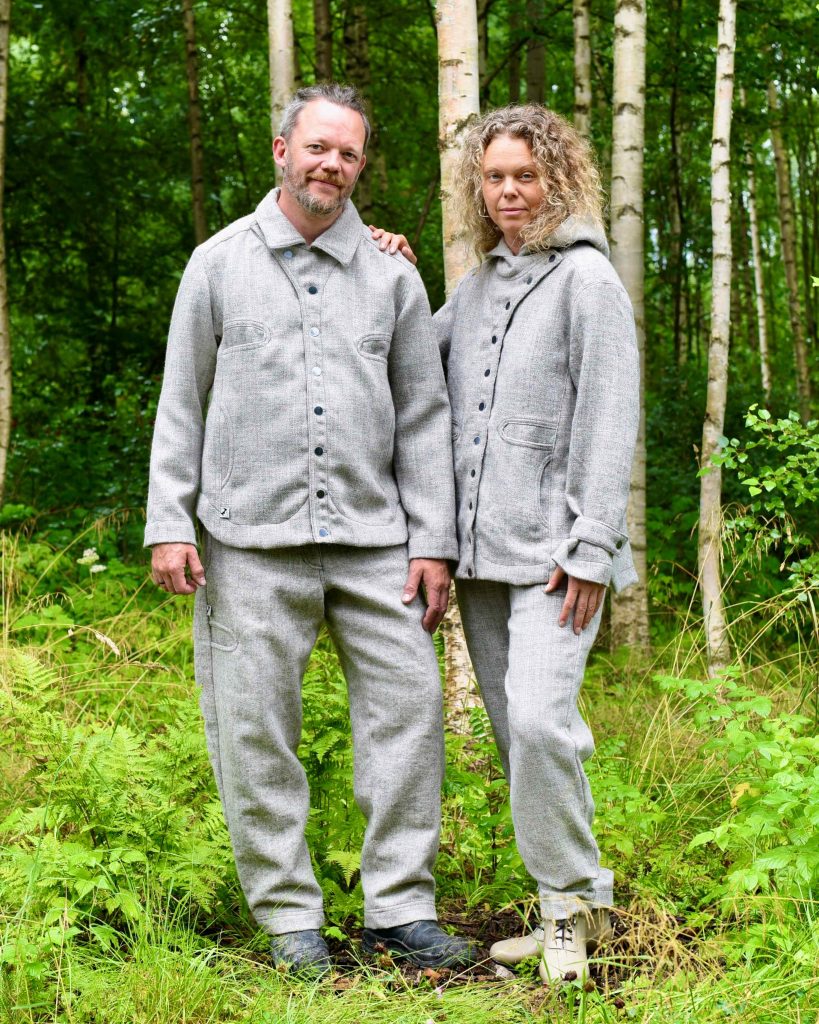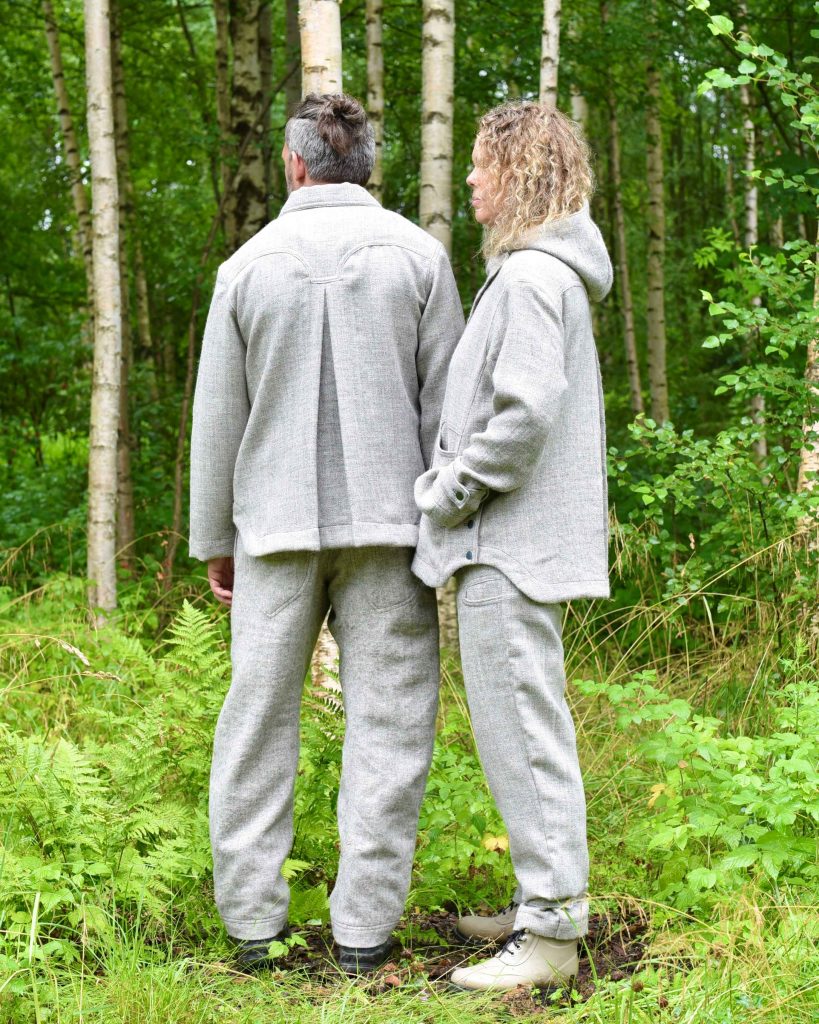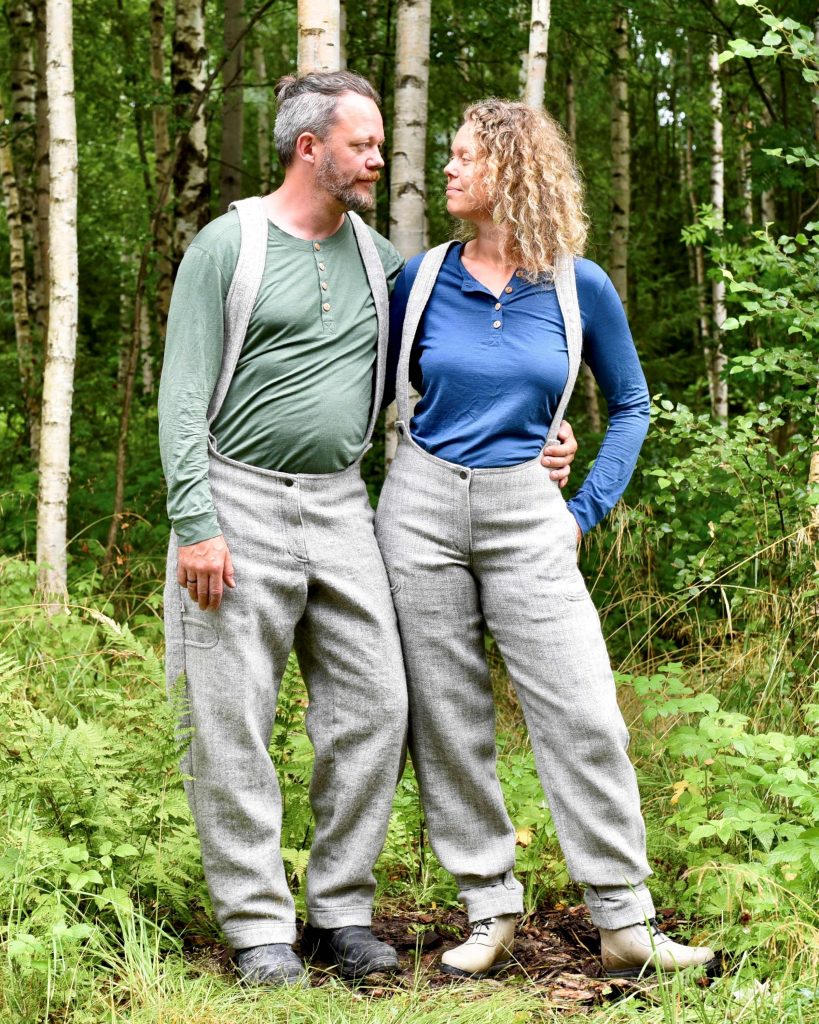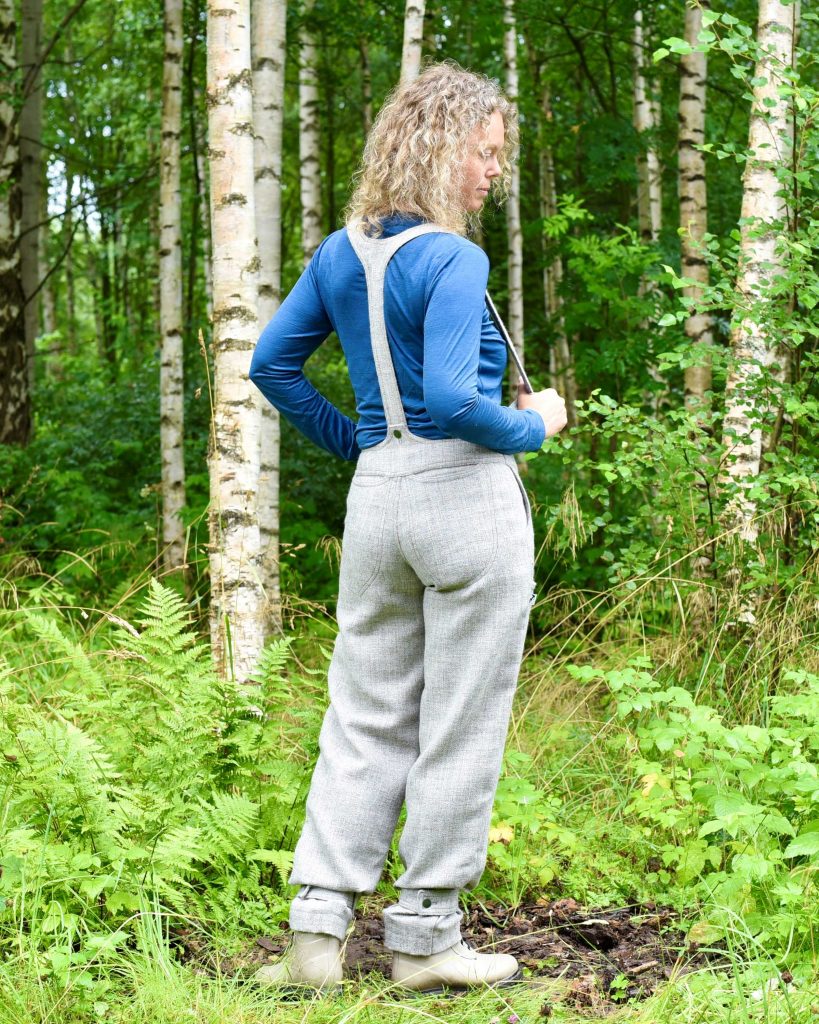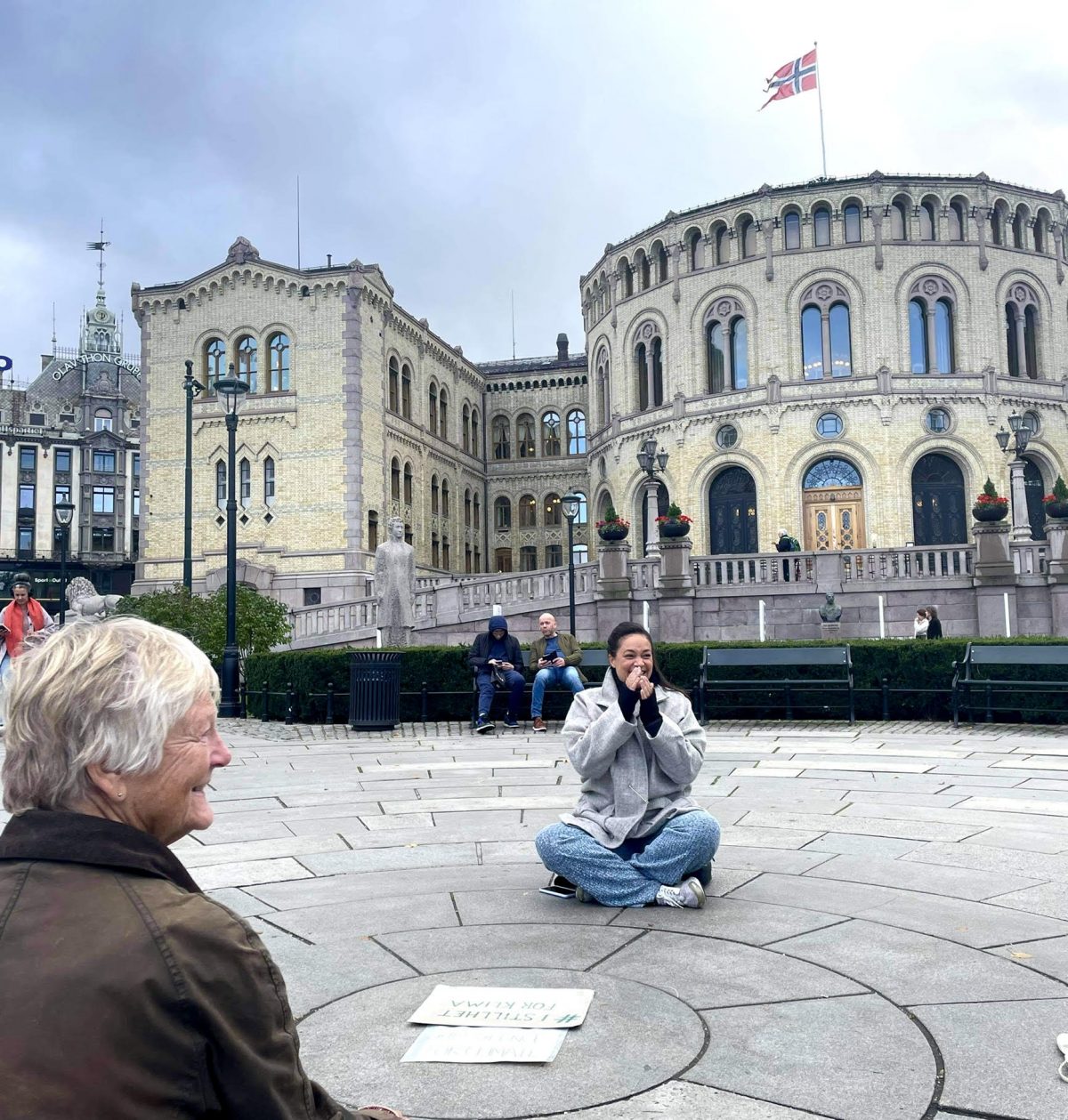VikingGold: Weaving History and Fashion together
Fashion met cultural history in the project VikingGold, and the two were woven together into a beautiful wool fabric, that found its way to museum exhibits and Norwegian national tv as the most sustainable fabric of the future.
During the annual event Oslo Runway, the Norwegian actress Iselin Shumba debuted as a catwalk model on a runway set up in a factory deep in the Norwegian forests close to the Swedish border. By chance I was at the event. By chance I was wearing the Oleana jacket I had worn on Norwegian national TV for the episode of Norway’s Sewing Bee (Symesterskapet) when Iselin Shumba was the “client” who wanted a jacket or coat she could wear on chilly days when she does her weekly “sit in for the climate” in front of the Parliament building in Oslo. She wanted the fabric to be “the most sustainable possible”, which was why the Norwegian national TV had called me. I’ll come back to that.
Let’s unravel the threads back in time and explore what fascinates people with the fabric.
The story starts with the project Valuing Norwegian Wool, led by Consumption Research Norway, before they became part of Oslo Metropolitan University, and financed by the Norwegian Research Council. One of the aims of the project was to explore a label of origin for Norwegian wool. “Norwool” had been trademarked by a Swedish company, an American outerwear company had done the same with “Norwegian Wool”. In addition, a Norwegian yarn company selling cheap Chinese-spun wool of uncertain origin called their product Viking Yarn.
To our big surprise, we discovered that one of the sponsors of the British-based Campaign for Wool was “Viking Wool of Norway.” The label was even owned by a subsidiary of the Norwegian farmers’ coop, Nortura. Why hadn’t they as project-partners informed us? The truth was rather obvious. The label was ugly as sin. It had been developed in the UK to sell carpet-wool, and as such, worked well. But for wool textiles and fashion? Curtis Wool Direct, who had developed the “Viking Wool of Norway” label, did everything in their power to launch it in Norway, including enlisting now King Charles, then the Prince of Wales, but Nortura put their foot down. Luckily.
However, this resulted in an idea, when the opportunity arose to apply for funding from KreaNord, a fund under the auspices of the Nordic Council of Ministers for cultural projects. What if we lifted up the cultural textile heritage from the Vikings, looking at the Viking women’s role in this trader and explorer culture, later explored by Michele Hayeur Smith in “The Valkyries’ Loom: The Archeology of Cloth Production and Female Power in the Atlantic”? Read more about this book here. This was the historic beauty and heritage we highlighted in the application, and which won the funding. We decided to call the project VikingGold.
In the project there were several partners: Consumption Research Norway (Oslo Metropolitan University), the Museum of Cultural History (University of Oslo), Nordic Initiative Clean & Ethical Fashion, and the Norwegian Fashion Institute, who took the lead. The project lasted from the autumn of 2013 until the autumn of 2015. However, VikingGold had long-term impact that was hard to envision from the outset.
Important for the project was to create meeting points for historical expertise, raw material suppliers, and the finished goods industry and designers. These represented people and groups who had not earlier cooperated. Representatives from the industry and designers got access to historical archives and got to see preserved textiles from the Viking age, and gain knowledge about the Vikings’ clothing and textile production. Marianne Vedeler, the archaeologist in the project, was simultaneously working on a reconstruction of the tunic from Lendbreen, Norway’s oldest garment from around year 300 AD, and we chose this as a starting-point. The tunic is about 500 years older than the Viking age, but diamond twill, the weaving-pattern, was widely used in the Viking age as well. The selected tunic was thoroughly examined and well documented, and this made it possible for us to be able to show both a reconstruction (described here) and our industrially produced fabric at the same time. Our collaborators, from sheep farmers to designers, were involved in the decision-making process and the discussions themselves, and were important for enhancing competence and understanding of what compromises must be made when a historical material is to be produced in a modern way.
The wool
We had to choose a breed living in Norway today. For the reconstruction, Old Norwegian (Gammelnorsk) sheep wool were used, while the VikingGold project used Old Norse Spæl and Modern Spæl (short-tailed) to get two different shades. Ingvild Espelien at Selbu Spinning Mill took responsibility for the collection of the 200 kilos of wool from two local herds and it was also she who sorted the wool into two shades and cleaned it, and also separated some of the coarser guard hairs out of the fleeces.

Spinning
Half of the wool was sent to Hillesvåg Woolen Mill, to spin the weft yarn. Selbu Spinning Mill spun the warp yarn, and both were spun with a z twist, though the warp was a little looser spun. The thickness of the yarn corresponded to 6 nm, as 7 nm was on the border of what the machines could spin. This may appear as a minor detail, however the trade-off between being closest to the original yarn in the tunic, and getting a good raw-material with the wool and the technology we have today, was important.

Weaving
Ingvild sent the warp yarn first to Krivi Vev, and in order for the yarn in the weft to be as compatible as possible, it was weighed before Hillesvåg started their spinning. No one at Krivi Vev had seen the original fabric, and worked from drawings and pictures in order to set up the pattern and density. A characteristic of older textiles is often a lack of symmetry in the patterns. Krivi Vev chose to clean up the pattern a little, and also chose to distribute darker and lighter portions evenly in the weave to counteract clear stripe patterns. The yarn initially seemed more difficult to weave than it actually was. The actual weaving of the 200 meters therefore went quickly and easily. See how it went here.
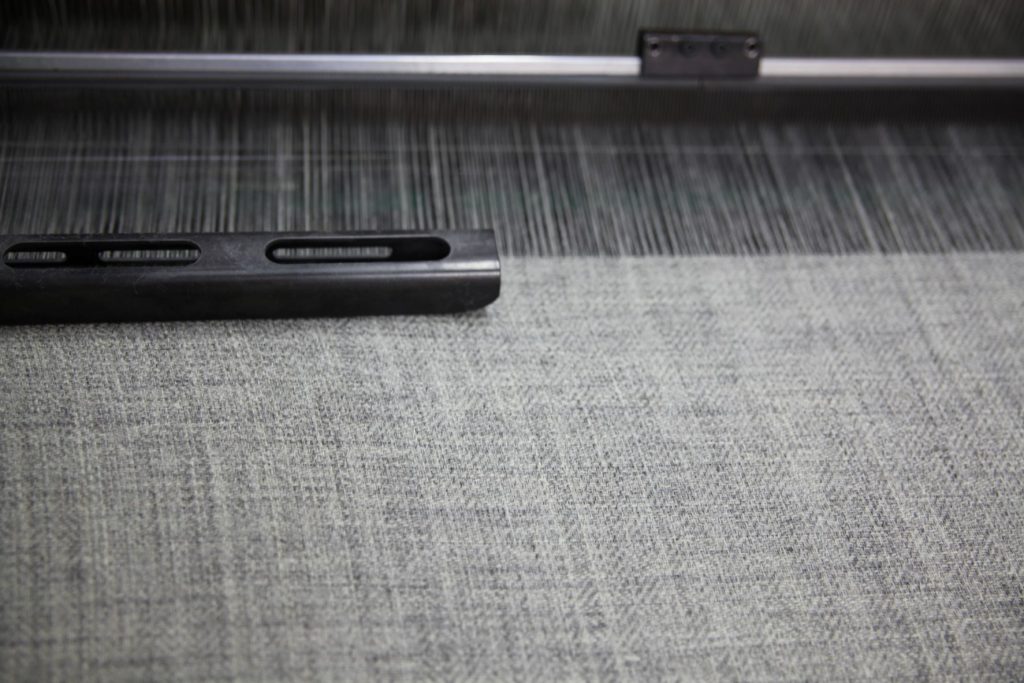
Finishing
Krivi Vev has no finishing facilities at Tingvoll, and usually sends their fabrics to Sweden for these types of processes. However, Sjølingstad Woolen Mill museum (which is part of the Vest-Agder museum) assumed responsibility for the last finishing, and although the fabric was a bit too wide for their machine, this went well. We chose a very simple and easy finish, although some of the designers had requested a felted, waulked or fulled fabric (see below for how this will now be resolved). For anyone who had seen the fabric before and after treatment, it was striking how much softer and smoother the finished fabric was than when it was newly woven.
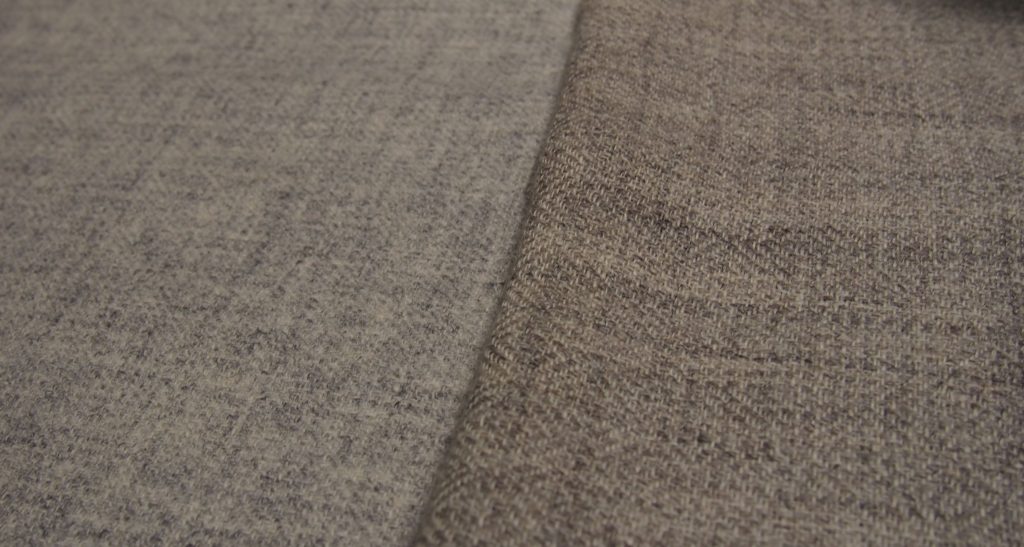
Design
Parallel to the actual fabric production, a design competition was announced for a select group of Norwegian and Icelandic designers – and the invited sketches were then exhibited as part of Ta det personlig (Take it personally) exhibition at the Historical Museum in Oslo, where both the original Lendbre tunics, the reconstruction of the tunic and VikingGold were presented with sketches from five Norwegian and two Icelandic designers.
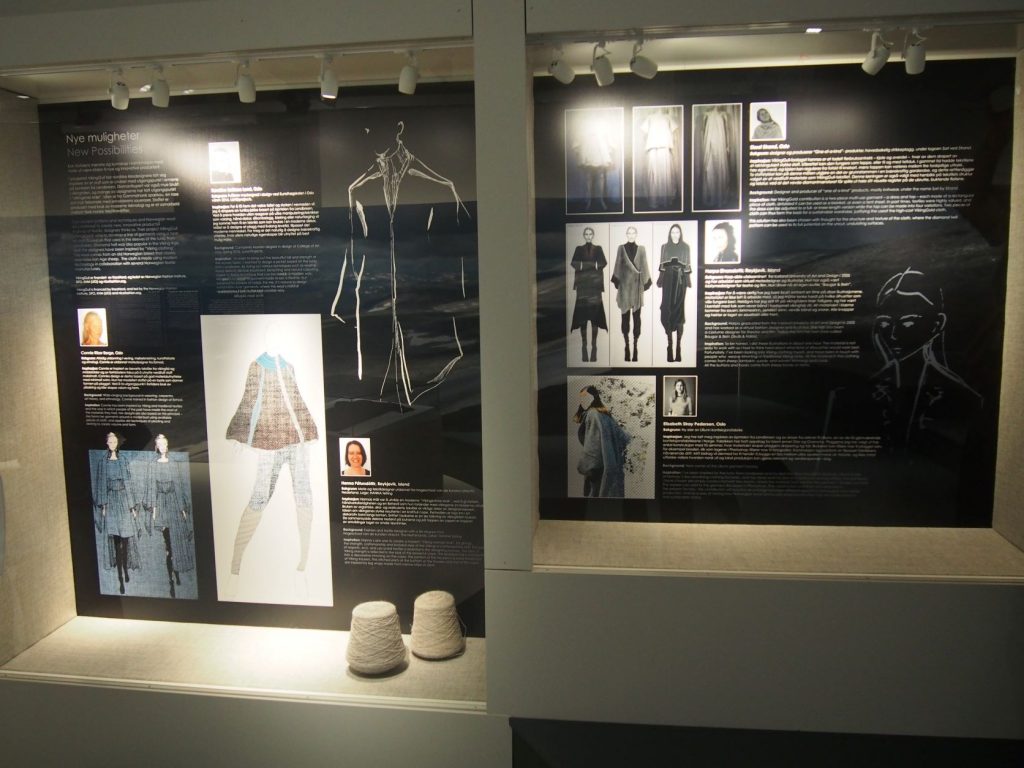
Among these, we picked out three who got several meters of fabric and sewed outfits that were shown during the Oslo Wool Day in 2015 (Sissel Strand, Connie Riiser Berger and Elisabeth Stray Pedersen). These were also shown at an exhibition at the Coastal Museum in Florø (Exhibit Tradition and trend: Norwegian wool in all times).
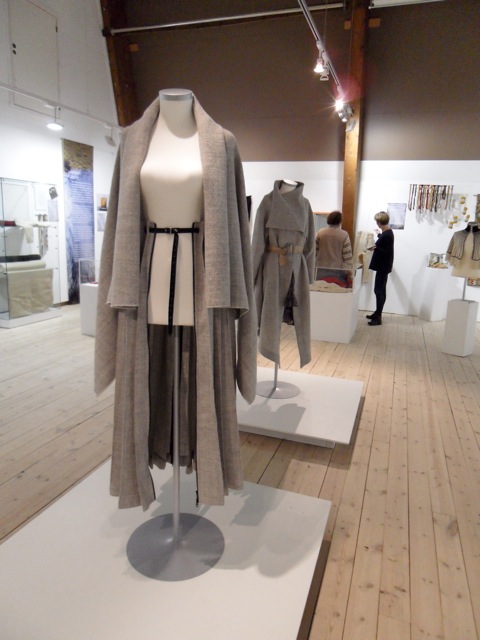
In addition, two designers have designed specific items, using the fabric: Malin Håvarstein and Rebeca Herlung, alongside Kim Holte, who received the material and has dyed it blue for her Viking re-enactment, and both Ingun Klepp and Ingvild Espelien have sewn dresses using the fabric.

Krivi Vev has woven a similar fabric afterwards with ordinary crossbred wool, and designer Marianne Mørck made a collection using this material. Also, the furniture producer Nuen has made a series of chairs with this same fabric. They have adopted a fibershed approach, which means they source their materials within a given radius. Read more about Fibershed here.
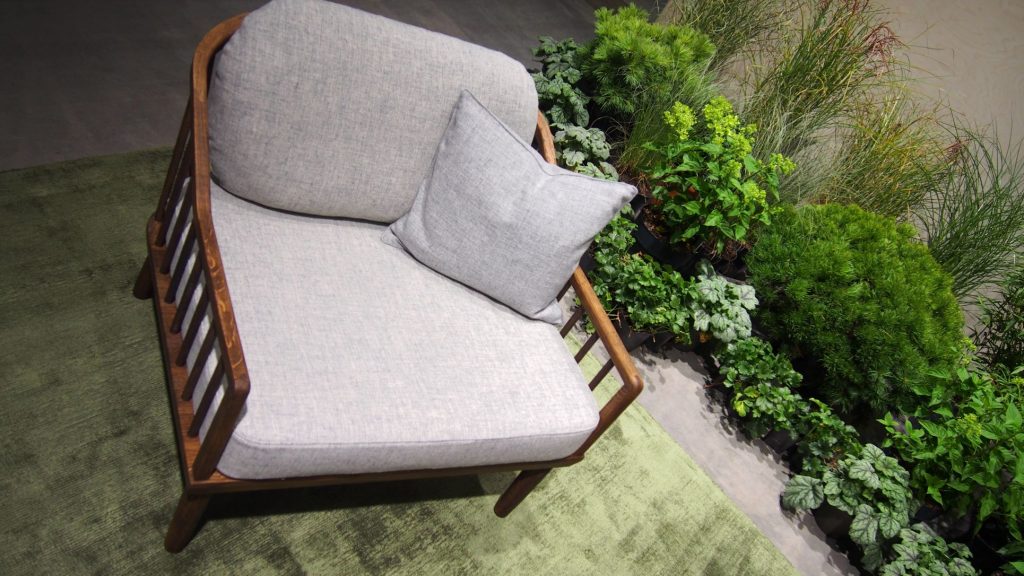
TV fame
After the project ended, there was still rolls of the fabric left over. The question remained what to do with these. During 2020, I was contacted by the Norwegian national broadcaster, NRK, who had the production rights for the British reality-concept Sewing Bee. They had decided that the focus for the up-coming season would be sustainability, and one of the episodes would look at the ‘most sustainable fabric of the future’. They clearly envisioned a ‘new-gen’ material, and wondered if perhaps fungi or waste from agriculture could be the feed-stock for such a material. They had already tried to get hold of materials, but had failed miserably. My suggestion was to use the VikingGold left-overs. And to turn the story-telling around into a new discourse that said “how the most sustainable fabric is not science-fiction, but rather reinventing the past”.
NRK loved the twist.
So, a few months later, I found myself on the set, explaining to the contestants, the three celebrities hosting the show and ‘the client’ Iselin Shumba about the sheep, the wool, the process and the fabric – and why it is the epitome of sustainability. All the contestants received a material-piece in order to trial sewing, as some of the designers we had worked with the material, said it did take some getting used to and offered some resistance. When the show aired a year later, the fantastic results rolled across the tv-screen and the winning coat/jacket was chosen by the Shumba, who posted pictures of her wearing it over and over again on Instagram. Which, of course, made it even more sustainable. However, how happy she was with the result I didn’t hear before much later, when she debuted as a catwalk-model a year later.
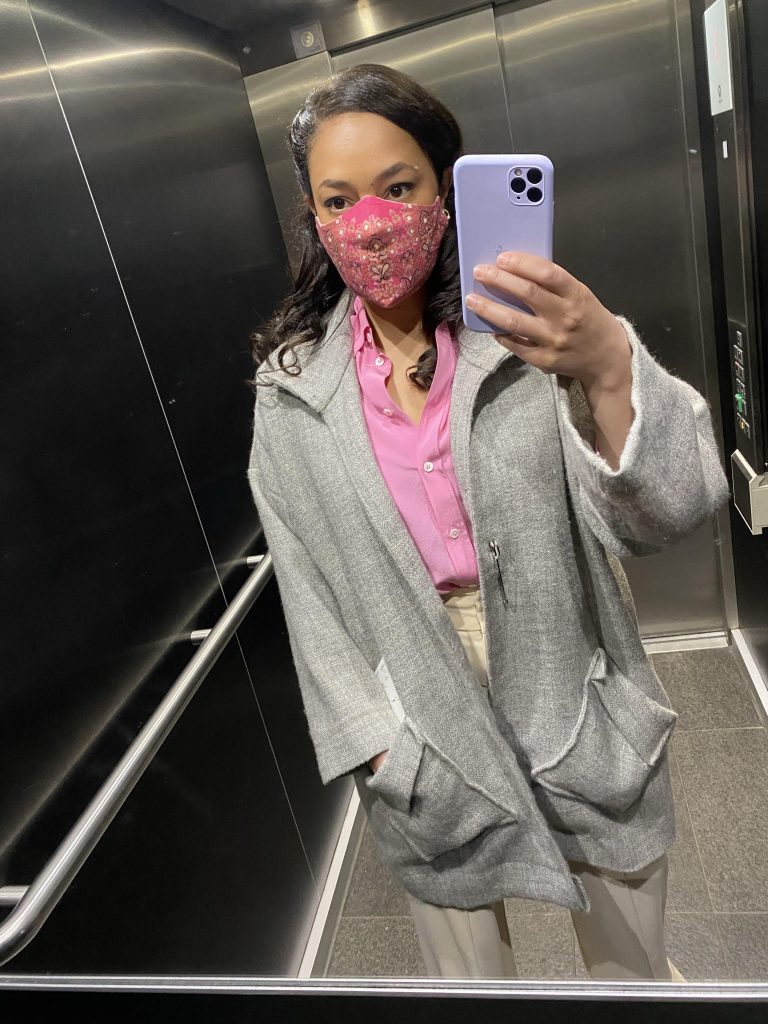
Latest development
During a conference at Selbu Spinning mill in October 2022, an American student from Rauland Academy for Traditonal Art and Folk Music, Will Riedlinger, presented work with fulling (or waulking) textiles with old techniques. We decided rather on a whim, to send him 10 meters of the VikingGold material to experiment with. He will be doing both “foot-fulling” and a trial with a wooden box he has reconstructed from old instructions, and document this for further research. So far he has reported that the VikingGold material offered much resistance to be fulled.
As we round up this story, how Iselin Shumba has chosen to use social media to promote climate change, to make a cultural sustainability aspect the main story – is stellar.
New update
During Arendalsuka, the project Textilefarmers and Fashion Agriculture (Tekstilbønder og motelandbruk) presented a new outfit for Norway’s textile farmers, designed by Veronika Glitsch in the last meters of the material. For the man’s outfit, the slightly felted fabric (fulled) mentioned above, was added.
